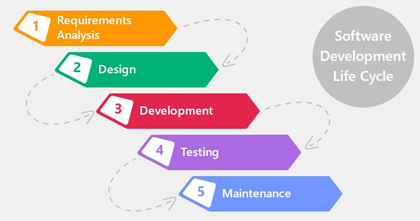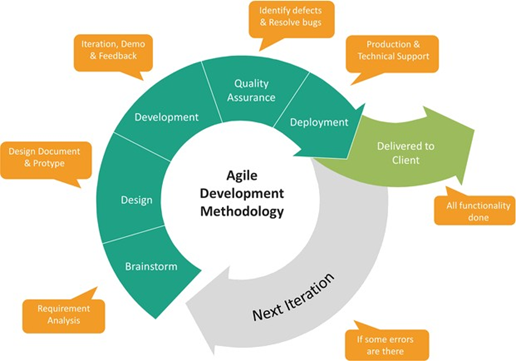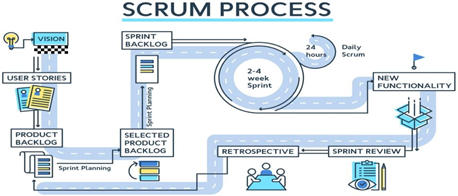✨ Great News! ✨
Now attend Azure DevOps Demo webinar by Sandeep Soni which is conducted on 11th October, from 5:30pm to 7pm. Register for the AZ-400 course by filling this Form: https://forms.gle/NxcBxkWk65teKXZq8
Azure DevOps Introduction
Azure DevOps (formerly Visual Studio Team Services) is a hosted suite of services providing development and collaboration tools for anyone who wants an enterprise-grade DevOps toolchain. Azure DevOps can help your team release code in a more efficient, cooperative, and stable manner. Azure DevOps has a lot of inbuilt functionality that allows teams to get up and running with managing their project and automating their workflows to increase productivity with a very short initial learning curve.
you can quickly get up and running with the many tools available.
- Git repositories for source control
- Build and Release pipelines for CI/CD automation
- Agile tools covering Kanban/scrum project methodologies
- Many pre-built deployment tasks/steps to cover the most common use cases and the ability to extend this with your own tasks.
- Hosted build/release agents with the ability to additionally run your own
- Custom dashboards to report on build/release and agile metrics.
- Built-in wiki
Azure DevOps is available in two different forms:
- Azure DevOps Server, collaboration software for software development formerly known as Team Foundation Server (TFS) and Visual Studio Team System (VSTS)
- Azure DevOps Services, cloud service for software development formerly known as Visual Studio Team Services and Visual Studio Online
History: This first version of Team Foundation Server was released on March 17, 2006.
| Product name | Form | Release year |
| Visual Studio 2005 Team System | On-premises | 2006 |
| Visual Studio Team System 2008 | On-premises | 2008 |
| Team Foundation Server 2010 | On-premises | 2010 |
| Team Foundation Service Preview | Cloud | 2012 |
| Team Foundation Server 2012 | On-premises | 2012 |
| Visual Studio Online | Cloud | 2013 |
| Team Foundation Server 2013 | On-premises | 2013 |
| Team Foundation Server 2015 | On-premises | 2015 |
| Visual Studio Team Services | Cloud | 2015 |
| Team Foundation Server 2017 | On-premises | 2017 |
| Team Foundation Server 2018 | On-premises | 2017 |
| Azure DevOps Services | Cloud | 2018 |
| Azure DevOps Server 2019 | On-premises | 2019 |
Traditional Software Development Life Cycle
The developers create applications and the operations teams deploy them to an infrastructure they manage.
Responsibility of Developers.
1.Develop Software Applications
2.New Features Implementation
3.Collaborate with other Developers in Team.
4.Maintain Source Repos and deal with versions.
5.Pass on the code to the operations team.
Responsibility of IT Operations
1.IT Operations determine how the software and hardware are managed.
2.Plan and Provide the required IT Infrastructure for Testing and Production of Applications.
3.Deploy the Application and Database.
4.Validate and Monitor performance.
Waterfall Model:
In the below diagram you will see the phases it will involve:

How the traditional Systems worked:
Tasks would be divided into different groups based on specialization
1.Group to write specification
2.Group that Develop application.
3.Group that Test the application.
4.Group to configure and manage VM
5.Group to that hands over VM to another group to install database
6.and so on…
A system / process is created for each action and each group operations
in isolation from others. Groups communicate with each other in a very formal way,
such as using ticketing system.
Drawback:
- This requires handoffs from one group to another. This can introduce significant delays, inconsistencies and inaccuracies.
- Lack of a common approach among the groups contributes to the problems of long build times and errors.
- And blame game begins.

What is Agile Methodology
Agile is a process by which a team can manage a project by breaking it up into several stages and involving constant collaboration with stakeholders and continuous improvement and iteration at every stage. There are no surprises. Continuous collaboration is key, both among team members and with project stakeholders, to make fully-informed decisions.

Scrum is a framework for project management that emphasizes teamwork, accountability and iterative progress toward a well-defined goal….
The three pillars of Scrum are transparency, inspection and adaptation. The framework, which is often part of Agile software development, is named for a rugby formation. Scrum is one of the implementations of agile methodology. In which incremental builds are delivered to the customer in every two to three weeks’ time.

Get Complete Microsoft Azure DevOps training

